
IT SEEMS that the world is becoming more fractious, with people taking to the streets in protest at perceived injustices. In the past full year of the Loro Parque Fundación and NABU (Nature and Biodiversity Conservation Union, the BirdLife International partner of Germany) project for the conservation of the endemic Yellow-fronted parrot (Poicephalus flavifrons) in Ethiopia, such discontent has impacted negatively on progress.
Previously unaffected by nationwide political protests, unrest finally arrived at the Kafa Biosphere Reserve. Demonstrations were largely peaceful but local youth groups, expressing their dissatisfaction with the lack of land and employment opportunities, misplaced their frustration on two project nurseries. The vandalism destroyed planting beds and shade roofs, as well as about 31,200 seedlings, these forming part of the 173-hectare reforestation effort to expand breeding and feeding areas for the local yellow-fronted parrots. Efforts are underway to secure funding to ensure the replacement of the destroyed seedlings.
At about the same time, scientists published the first full assessment of risks to the world’s coffee plants, including the two species used for the coffee we drink, which shows that 60 per cent of 124 known species are on the edge of extinction. That figure gives cause for concern, as wild coffee is critical for sustaining the global coffee crop. Ethiopia is the home of Arabica coffee, where it grows naturally in the upland rainforests where yellow-fronted parrots are also found. Wild Arabica is used to supply seeds for coffee farming and is also harvested directly.
Denne historien er fra December 04, 2019-utgaven av Cage & Aviary Birds.
Start din 7-dagers gratis prøveperiode på Magzter GOLD for å få tilgang til tusenvis av utvalgte premiumhistorier og 9000+ magasiner og aviser.
Allerede abonnent ? Logg på
Denne historien er fra December 04, 2019-utgaven av Cage & Aviary Birds.
Start din 7-dagers gratis prøveperiode på Magzter GOLD for å få tilgang til tusenvis av utvalgte premiumhistorier og 9000+ magasiner og aviser.
Allerede abonnent? Logg på
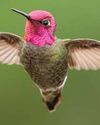
The World's Best-Known Hummingbird?
Intensively studied, the gem-like Anna’s hummingbird is a welcome visitor to the gardens of America’s most populous state: California. Bill Naylor investigates its life history
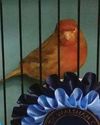
The charm of the English Cinnamon
Despite its long and complicated history, the true Cinnamon canary is still with us – in the hands of a tiny group of breeders. DONALD SKINNER-REID reckons it deserves wider appreciation
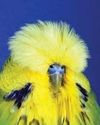
Spangles: a personal overview
FRED WRIGHT relates a budgie story of over-exploitation, consequent problems and abundant potential for the future

New converts to old breeds
Old and rare canaries have a reputation for adding fresh interest and challenge to the hobby. PETE HOOK and NICK JOY agree, and explain the birds’ charm to Dave Brown

Themed aviaries are a hit with the public at annual Stafford show
DECORATIVE AVIARY DISPLAYS from a CBS and an online bird keeping advice group were voted in the top three by visitors for the inaugural Stafford Aviary Competition.
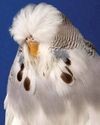
Pieds with potential
More than just a lesser variety, the dominant pied will introduce challenge and change into most studs, reckons CLIVE WAKEMAN. Here he discusses pairings to try and others to avoid

Club News
Welcome to the club and show pages – the bit that’s all about you Results: convention, specialist & rare and Breeder of the Year

Canaries Month by Month:
With Christmas around the corner, BRIAN KEENAN is well into his winter programme, and reckons he might deserve a nice outcross
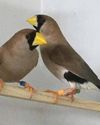
Smart Choice, Docile Nature
Dave Brown welcomes the masked grassfinch to his birdroom and shares advice on this lovely Australian species
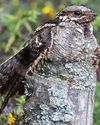
The truth about the ‘flying toad'
Odd local names and weird superstitions can’t hide the beauty and elegance of the nightjar, a species that has made a fascinating subject in a few zoo collections, reveals BILL NAYLOR